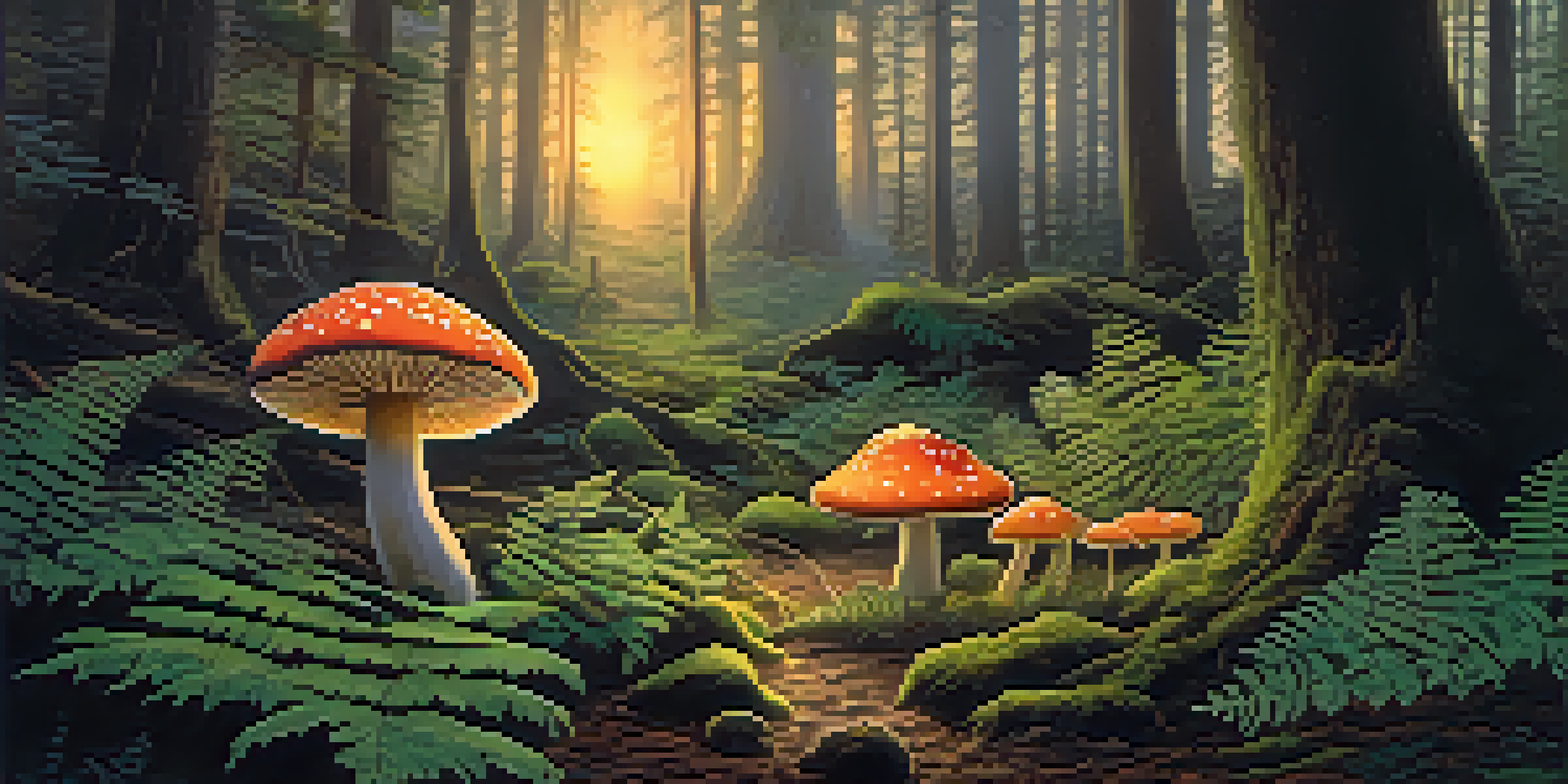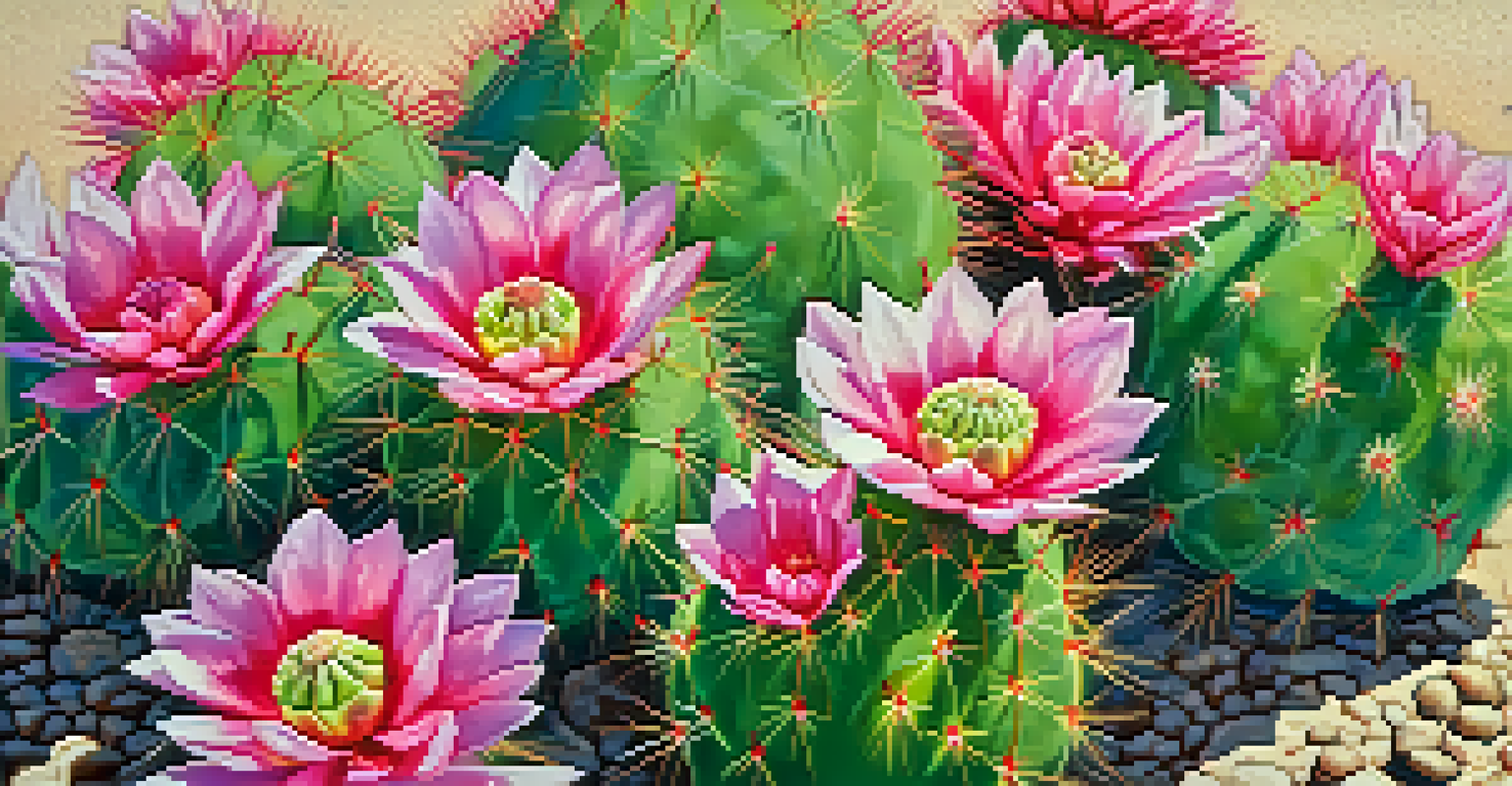Entheogenic Plants and Their Cultural Significance in Rituals

Understanding Entheogenic Plants and Their Uses
Entheogenic plants are those that induce altered states of consciousness, often utilized in spiritual or religious contexts. They have been used for centuries across various cultures, serving as conduits for deeper connections with the divine. Common examples include peyote, psilocybin mushrooms, and ayahuasca, each carrying unique properties and historical significance.
Psychedelics can help us understand the mind, but it is important to remember the cultural context in which these substances have been used for centuries.
These plants are not just recreational substances; their use is deeply embedded in the cultural practices of many indigenous communities. For instance, ayahuasca is a central part of Amazonian shamanism, where it is believed to provide healing and insight. This highlights the profound respect and understanding surrounding these plants, as they are seen as sacred tools rather than mere substances.
In modern society, there's a growing interest in the therapeutic potential of these plants, prompting a resurgence in their study. Researchers are exploring their effects on mental health, spirituality, and personal growth. This renewed focus underscores the need to understand their cultural significance, as it's crucial for respectful and informed use.
The Role of Rituals in Utilizing Entheogenic Plants
Rituals serve as structured frameworks within which entheogenic plants are consumed, enhancing their spiritual effects. These rituals can vary widely, from elaborate ceremonies led by shamans to more personal, introspective practices. Each ritual is designed to create a safe and meaningful environment, allowing participants to explore their consciousness.

For example, in a traditional ayahuasca ceremony, participants often engage in group singing, drumming, and guided meditation. This collective experience fosters a sense of community and shared purpose, amplifying the effects of the plant. Such rituals are not just about consumption; they are about creating a sacred space for transformation and healing.
Cultural Roots of Entheogenic Plants
Entheogenic plants are deeply embedded in the spiritual practices of various cultures, serving as sacred tools for healing and connection.
Moreover, the ritual aspect helps to contextualize the experience, reminding participants of the plants' cultural roots. By honoring these traditions, individuals can engage with entheogenic plants in a more respectful and meaningful way. This connection to ritual emphasizes the importance of intention, which can greatly influence the outcomes of such experiences.
Historical Perspectives on Entheogenic Plant Use
Throughout history, various cultures have embraced entheogenic plants, weaving them into the fabric of their spiritual and healing practices. For instance, the use of the peyote cactus by Native American tribes dates back thousands of years, serving as a sacrament in religious ceremonies. These historical practices highlight the longstanding human desire to explore altered states of consciousness.
The experience of psychedelics can lead to profound insights, but it is essential to approach them with respect and a sense of responsibility for their cultural origins.
Similarly, the ancient Greeks utilized the kykeon, a beverage made from barley and possibly containing psychoactive elements, during the Eleusinian Mysteries. These rituals were designed to foster a connection with the divine and impart mystical knowledge. Such examples illustrate how entheogenic plants have been integral to spiritual traditions across different cultures and epochs.
Understanding this historical context is essential for appreciating the contemporary resurgence of interest in these plants. As modern society grapples with mental health challenges and a quest for deeper meaning, it looks back to these ancient practices for guidance. This connection to history enriches our understanding of entheogens and their potential role in contemporary spirituality.
Cultural Significance of Specific Entheogenic Plants
Each entheogenic plant carries its own cultural significance, shaped by the beliefs and traditions of the communities that use them. For instance, the sacred mushroom, known as the 'flesh of the gods' by the Mazatec people of Mexico, is used in healing ceremonies and to connect with the spirit world. This cultural lens adds depth to the experience, transforming it from a simple act of consumption to a sacred encounter.
Another example is the use of San Pedro cactus in Andean cultures, where it's traditionally consumed in a ceremonial context for healing and divination. The cultural narratives surrounding these plants enrich the experience, providing participants with a deeper understanding of their purpose and potential effects. Such stories remind us that these plants are more than just substances; they are integral to a community's identity.
Importance of Rituals in Usage
Rituals enhance the experience of using entheogenic plants by creating a safe space for transformation and honoring cultural traditions.
As interest in entheogenic plants grows in the West, it's crucial to approach them with respect for their cultural origins. Understanding their significance within their traditional contexts helps prevent appropriation and encourages responsible use. By honoring these traditions, individuals can engage with entheogenic plants in a way that is both mindful and enriching.
Modern Interpretations and Adaptations of Rituals
In recent years, there has been a notable shift in how entheogenic plant rituals are perceived and practiced in modern contexts. With the rise of wellness culture, many are adapting traditional rituals to fit contemporary lifestyles. These adaptations often prioritize personal exploration and self-care, reflecting a broader societal shift towards individualism and holistic wellness.
For instance, guided retreats focusing on psilocybin mushrooms have become popular, attracting participants seeking healing or personal growth. These retreats often incorporate elements of traditional rituals, such as meditation and group sharing, while also allowing for personal interpretation. This blend of old and new can create a powerful experience, though it raises questions about authenticity and respect for the original practices.
As these modern interpretations continue to evolve, it’s crucial to maintain a dialogue about the cultural significance of entheogenic plants. By acknowledging their roots and the wisdom of traditional practices, we can foster a more respectful and informed approach. Ultimately, the goal is to create experiences that honor the past while offering meaningful insights for the present.
Ethical Considerations in the Use of Entheogenic Plants
As interest in entheogenic plants grows, so does the importance of discussing the ethical implications of their use. One major concern is the potential for cultural appropriation, where individuals adopt these practices without understanding their cultural significance. This can lead to a superficial engagement that disrespects the traditions and beliefs of the communities from which these plants originate.
Additionally, sustainability is a critical issue, as many entheogenic plants are threatened by overharvesting and habitat loss. For example, the peyote cactus is facing declining populations due to increased demand. It is essential for users and practitioners to consider the environmental impact of their choices, advocating for responsible sourcing and sustainable practices.
Ethical Considerations Are Crucial
Addressing ethical concerns such as cultural appropriation and sustainability is essential for a respectful relationship with entheogenic plants.
Engaging in discussions around ethics helps to create a more respectful relationship with entheogenic plants. By recognizing the rights of indigenous communities and the need for conservation, we can foster a more equitable framework for the use of these powerful plants. This awareness ultimately contributes to a richer and more respectful understanding of their cultural significance.
Conclusion: A Respectful Approach to Entheogenic Plants
In summary, entheogenic plants hold a rich tapestry of cultural significance that spans centuries and continents. Understanding their historical and cultural roots allows us to engage with them in a more meaningful way. Whether through traditional rituals or modern adaptations, the key lies in approaching these experiences with respect and intention.
As we navigate the growing interest in these plants, it’s vital to honor the voices and practices of the communities that have used them for generations. By prioritizing ethical considerations and sustainability, we can ensure that the resurgence of interest in entheogenic plants is both respectful and responsible.

Ultimately, the journey into the world of entheogenic plants can be a profound one, offering insights, healing, and connection. By fostering a respectful relationship with these plants and the traditions surrounding them, we can enrich our own experiences while honoring the cultures that have safeguarded this knowledge for centuries.